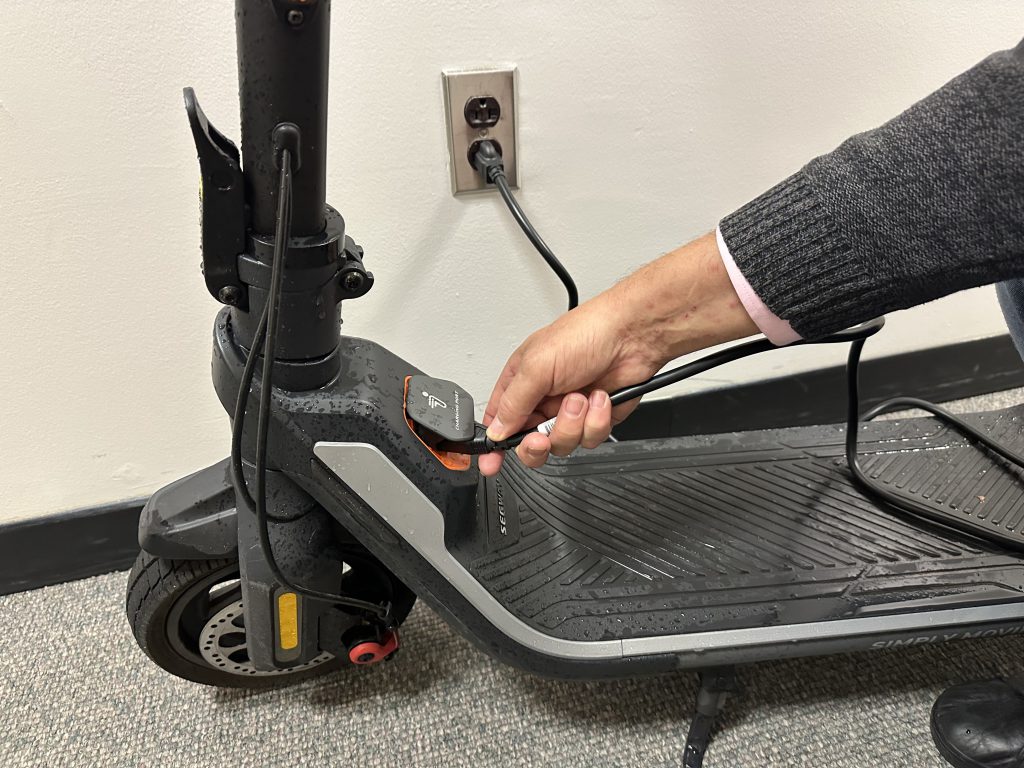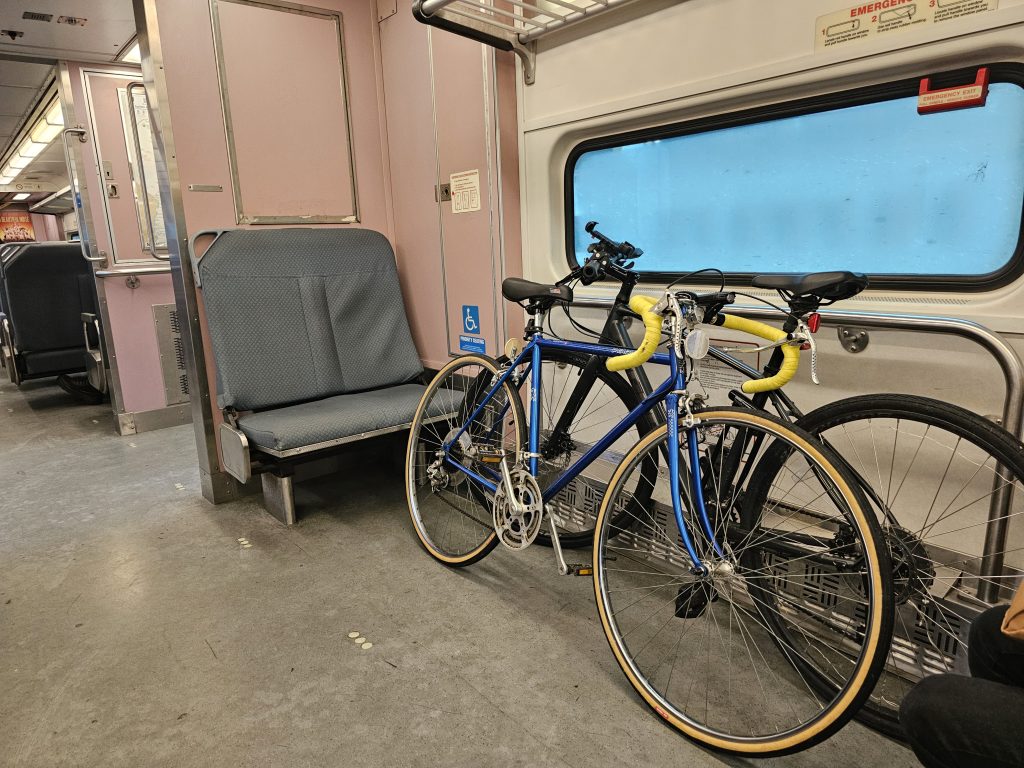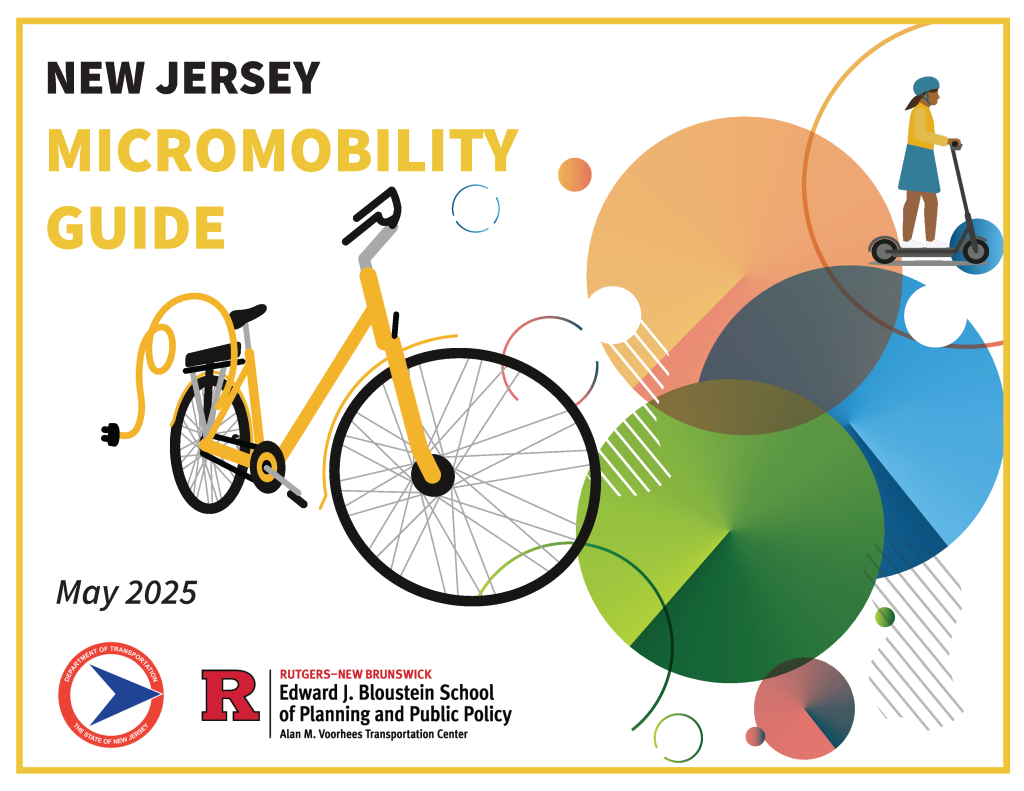The NJDOT Bicycle and Pedestrian Resource Center’s newly released “New Jersey Micromobility Guide” summarizes state laws and best practices for safely riding, charging, and storing micromobility devices in New Jersey. By providing tips, answering common questions, and clarifying how different devices are regulated, this guide serves as a resource that promotes the safe and legal use of e-bikes, e-scooters, and other forms of micromobility throughout New Jersey.
Read NJDOT’s press release about the Micromobility Guide here.
Why is this Resource Needed?
In recent years, micromobility options such as e-bikes and e-scooters have become increasingly popular forms of transportation for both commuting and leisure. Micromobility provides an affordable and energy-efficient alternative to driving, and as these devices surge in popularity, it is important to encourage safe usage and ridership.
Report Highlights
Laws and Regulations
A key part of the guide is the information it provides on the regulations, characteristics, and transit agency rules for 11 types of micromobility devices, including traditional bikes, e-bikes, e-scooters, Segways, roller skates, and more. The guide also clarifies how different classes of e-bikes are regulated under New Jersey state law. Class 1 and 2 e-bikes, for example, are considered “low-speed electric bicycles” and are regulated differently than higher-speed, Class 3 e-bikes. Key device features and regulatory differences are highlighted in easy-to-understand one-page “cheat sheets” for each type of device.
Additionally, new laws and guidelines in New Jersey have been passed to classify e-bikes and scooters, regulate driver behavior when passing micromobility users, and manage traveling on public transportation with these devices. The guide addresses the pressing need for clear information on these changes.

Battery and Charging Safety
The guide also addresses safety concerns related to the lithium-ion batteries that power micromobility devices, which can pose fire risks if low-quality batteries are used or batteries are charged improperly. In preventing fires, it is crucial to buy high-quality batteries from responsible manufacturers with positive customer reviews and experiences. Buyers should also look for battery and e-mobility device safety certifications from UL when purchasing a battery or device, as well as safety features such as battery management systems (BMS) to monitor voltage, temperature, and more, fault tolerance, and thermal management systems such as cooling fans inside the device.
Safe charging is also important to prevent fires. The guide offers best practices for charging including avoiding overnight charging, charging away from flammable materials, using outlet timers or fireproof bags when charging, and not charging damaged batteries. Additionally, devices with lithium-ion batteries should not be stored in direct sunlight, blocking safety or escape routes, near combustible objects, or in non-ventilated areas.
For more information, see our blog article on lithium-ion battery safety.
Safety Tips
The guide offers a variety of safety tips and best practices for using micromobility, including tips for locking and parking devices and bringing devices on transit. Guidance is also provided on how to safely ride a micromobility device, including laws regulating where micromobility users should ride when sharing a roadway with cars. Additionally, the guide outlines rules and best practices for riding on different types of trails and paths, as well as boardwalks along the Jersey Shore. Importantly, many micromobility regulations on natural trails and bike paths vary by municipality or county.


Bringing Micromobility on Transit
Micromobility can provide a solution for getting to or from public transit stations, bus stops, and other transportation facilities. While many train, bus, and ferry agencies allow micromobility devices on their services, specific rules vary depending on the device, agency, day of the week, and time of day. As outlined in the guide, devices with gas-powered engines are prohibited from transit, but non-gas-powered devices are typically welcome. In some cases, foldable devices may be allowed while non-foldable ones are not. Since regulations vary widely, it is always beneficial to check an agency’s rules before beginning your trip.
In providing crucial information on laws and regulations as well as best practices for safe riding, the New Jersey Micromobility Guide aims to promote safety and understanding of the law among all micromobility riders throughout the state.

